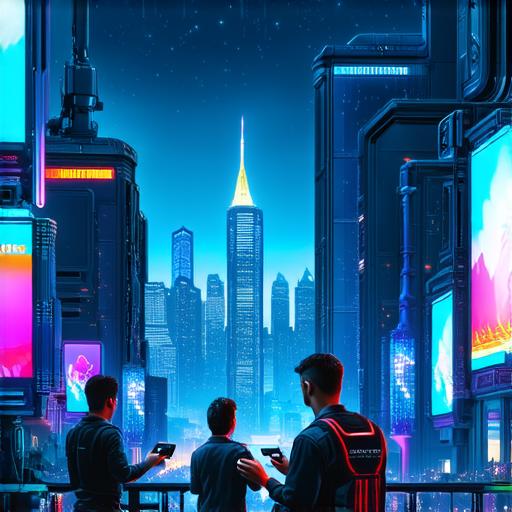Augmented reality (AR) is an emerging technology that has revolutionized various sectors such as healthcare, education, and entertainment. AR is a technology that enables the superimposition of digital content onto the real world. In this article, we will delve into how AR is being employed in the entertainment sector to create immersive experiences for users.
Applications of AR in Entertainment:

1. Gaming:
AR gaming has been one of the most popular applications of this technology in the entertainment industry. With AR, gamers can interact with their virtual world in a more immersive way than ever before. For example, the Pokémon Go game is a prime example of how AR has transformed the gaming industry. Players can capture virtual creatures and battle them in real-world environments.
2. Advertising:
AR has also revolutionized advertising by allowing companies to create interactive ads that engage users in new and exciting ways. For instance, Coca-Cola’s “Share a Coke” campaign used AR to allow customers to personalize their own Coke bottles. By scanning the bottle with an AR app, customers could see their names on the label, making for a more personalized and engaging advertising experience.
3. Movie and TV:
AR is also being employed in the movie and TV industry to create immersive experiences for users. For example, the “The Lion King” AR app allowed users to explore the world of the movie in a more interactive way. Users could see behind-the-scenes footage and interact with characters from the film.
4. Education:
AR is also being used in education to create more engaging learning experiences for students. For example, AR can be used to teach anatomy by allowing students to explore the human body in a more interactive way. By using an AR app, students can see the different organs and systems of the body in 3D, making it easier to understand how they work.
Benefits of AR in Entertainment:
1. Increased Engagement:
One of the main benefits of AR in entertainment is increased engagement. AR allows users to interact with digital content in a more immersive way than ever before, leading to increased engagement and a more memorable experience.
2. Improved Accessibility:
AR also improves accessibility by allowing people with disabilities to engage with content in new ways. For example, the visually impaired can use AR technology to navigate virtual environments using audio cues.
3. Enhanced Creativity:
AR also allows for enhanced creativity by enabling users to create their own digital content. This can lead to more innovative and engaging experiences for users.
Case Studies:
1. Magic Leap:
Magic Leap is an AR company that has created a platform for developers to create immersive experiences for users. The company’s flagship product, the Magic Leap One, allows users to explore virtual worlds in a more interactive way than ever before. For example, the device can be used to play games, watch movies, and even learn about art history in a more immersive way.
2. Ikea Place:
IKEA Place is an AR app that allows users to see how furniture would look in their own homes before they buy it. By using the app, users can see how different pieces of furniture would look in their home and make more informed purchasing decisions.
Conclusion:
AR is a technology that has the potential to revolutionize the entertainment industry by creating immersive experiences for users. From gaming to advertising, movies and TV, and education, AR is being employed in various sectors of the entertainment industry to create more engaging and memorable experiences for users. As this technology continues to evolve, we can expect to see even more innovative applications in the future.
